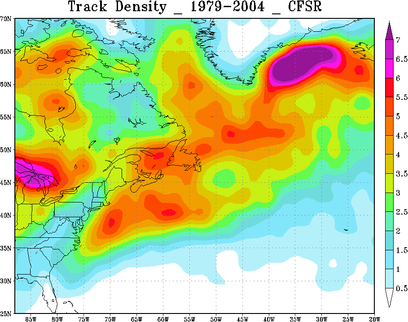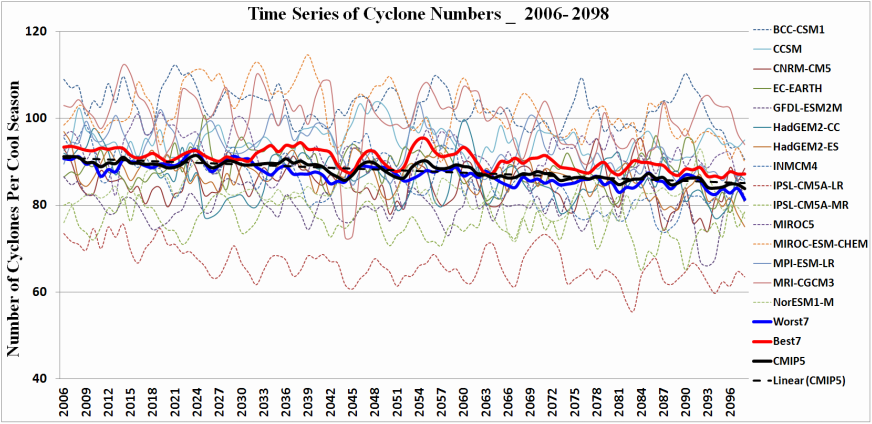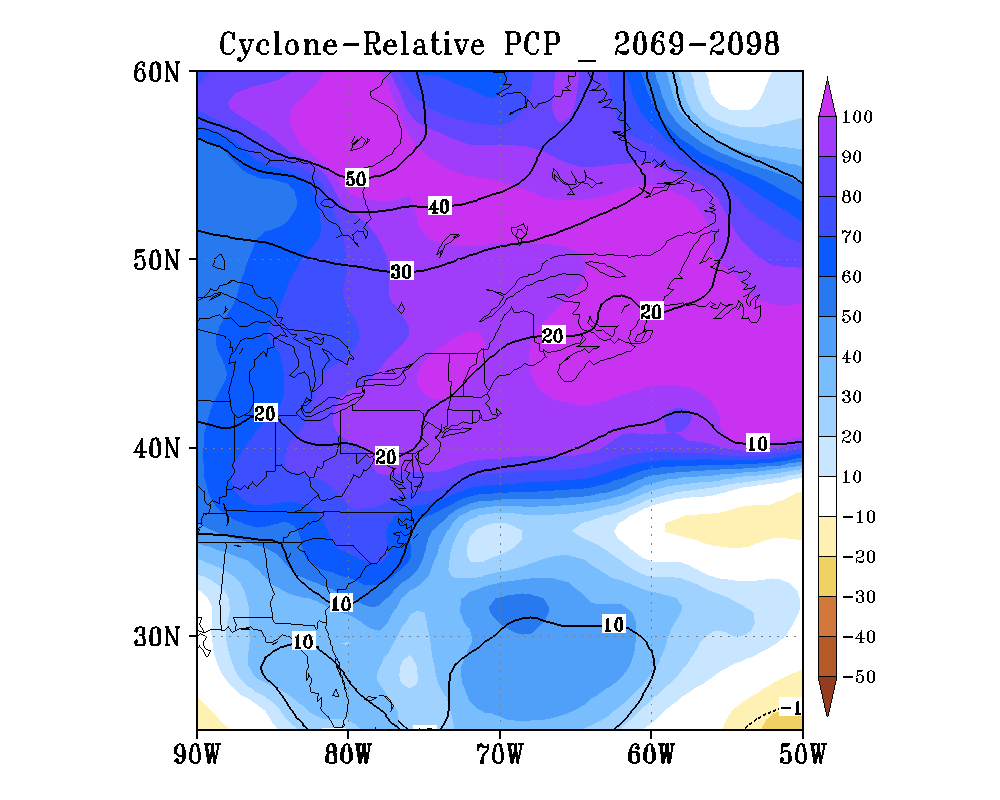Extratropical cyclones over East Coast and Western Atlantic (EC-WA) during cool season (NOV-MARCH) are analyzed for 15 Coupled Model Intercomparison Project phase 5 (CMIP5) models for historical and RCP8.5 simulations. The CMIP5 results for historical period are verified using Climate Forecast System Reanalysis (CFSR) and ranked based on their performance. The best 7 models (Best7) were used to determine the future changes in cool season cyclones. Although there is a decrease in cyclone track density over East Coast and Western Atlantic (EC-WA) storm track, the cyclone track density increases over eastern North America slightly, including more intense cyclones over East Coast Land (ECL).
Cyclone Activity During Cool Season for Historical Mean and Future Changes
(unit: number of cyclones per 50000km**2 per cool season)
(contour in top panel: spread, contour in bottom panel: percentage change)




Time Series of Cyclone Numbers over EC-WA During Cool Seasons

Time Series of Intense (<980hPa) Cyclone Numbers over ECL During Cool Seasons

Future Change of Cyclone Intensity (minimum SLP) for ECL and EC-WA


To investigate different fields associated with cyclone activities accurately, we use the cyclone-relative approach to estimate the cyclon-relative fields. According the time and position (latitude and longitude) of each cyclone center, the cyclone-relative box is defined for each cyclone center. The X-Y coordinate is used instead of the geographic (longitude-latitude) coordinate to define the cyclone-relative box, so that the cyclone-relative boxes can cover the same area avoiding the impact of latitude change. This cyclone-relative box moves with the cyclone center. The variables within the cyclone-relative box are extracted. Put these data back to the map according to their geographical position and then we can statistically calculate the cyclone-relative fields over the map. For example, if we want to calculate cyclone-relative precipitation accumulation for a cool season, only the precipitation within the cyclone-relative box will be extracted and calculated. This approach provides a more accurate estimate of the field associated with cyclones than just adding up or averaging the field within a fixed domain. We also use these data within the cyclone-relative box to calculate the cyclone composite fields, so that we can also examine the distribution and pattern of different fields relative to cyclone center.
During 21st century the temperature gradient decrease since the temperature increase over higher latitude region is larger than the increase in lower latitude region. As a result, the total cyclone numbers decrease with the loss of baroclinicity across the Western Atlantic. However, the cyclone relative precipitation increase during middle and late 21st century, providing more latent heating which is favorable for the cyclone genesis and developing. This increase in precipitation is much larger over the East Coast Land (ECL, 20-30%) than that over the Western Atlantic (WA, 10-15%). So, the number of intense cyclones over the East Coast may increase during middle and late 21st century. And there are more extreme precipitation events associated with cyclones during cool season over the East Coast.
Cyclone-Relative Precipitation for Historical Mean and Future Change
(color: precipitation (mm per cool season), contour: percentage change)


